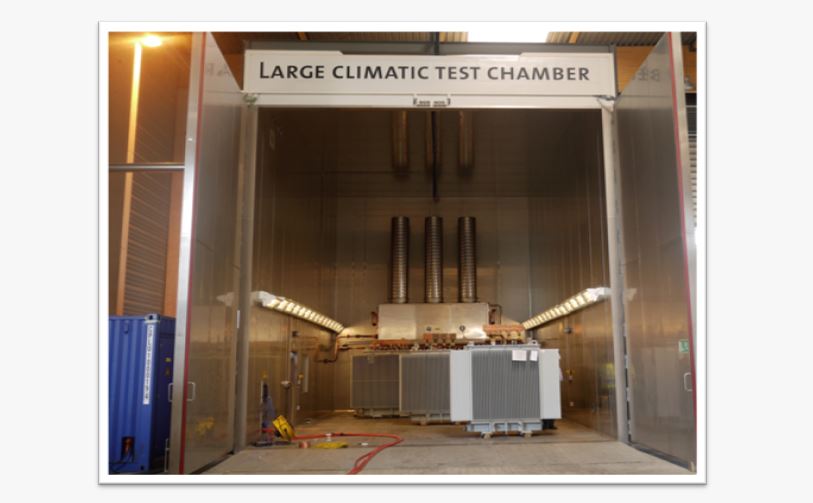CG Power Systems tests its transformers under extreme climatic conditions
Case "KDAF transformer testing"
In consumer electronics such as tablets and smartphones much attention is paid to decreasing the weight and dimensions of the device. However, such systems ask for longer battery life and more powerful computing power, which poses challenges in the design of such tools with respect to waste heat management, power consumption and efficiency.
Similar challenges and trends pop up in the wind power business for electrical component suppliers. First of all, electrical machinery needs to be as compact as possible with a high power density, in order to reduce the needed space in the wind turbine. Secondly, weight reduction is important, as this has an impact on the installation cost. As these electrical high -ower machines become more compact and, additionally, as they need to operate in different challenging climates worldwide ranging from -40 °C to +50 °C, the waste heat management has to be well designed and validated before applying them in the field.
Also, wind turbines tend to have a higher power capacity. To cope with the generated heat, many of the more compact electrical power systems are fitted with liquid cooling and external heat exchangers or radiators to work fine in all environmental conditions for desert heat to artic cold. Different types of cooling can be used for transformers. The figure below gives an overview of the cooling medium and circulation method for a KDAF type transformer by example. Also transformers with the traditional natural cooling are still used within the wind power business.
CG Power Systems, a leading supplier of wind turbine transformers, is also following up these trends and performed climatic tests on their designs in OWI-Lab’s climate chamber, in order to make sure that, apart from working in the virtual simulation environment, they also prove their worth in real-life conditions. 'Climate chamber testing helps us with validating our prototype in a real-life environment under controlled conditions, leading to a shorter time-to-market,' says Bram Cloet, R&D team leader at CG Power Systems. A KDAF type transformer was tested at the end of 2015 to optimise the control of the pump and fan of the prototype transformer. Its behaviour in desert heat as well as cold start in extreme cold settings were validated.
To control the pump and the fan of this prototype we used our new mobile inverter which is also used to test wind turbine gearboxes and their lubrication and cooling auxiliaries. As we test for different geographic markets, we often need to power the prototypes auxiliaries at 60 Hz or 690 V instead of the European 50 Hz that is common to us. With our newly bought mobile inverter we are flexible to include this functional testing of the auxiliaries in the offering for the customer.

Case "back-to-back testing"
While in most climate chamber testing we apply a short-circuit on the low voltage side (for more details: see paper "Cold start of a 5.5 MVA offshore transformer"), it does not give all the information needed to validate the functioning of the transformer in all operation conditions. To test the transformer under full load conditions and nominal voltage with minimised electrical power consumption, it is necessary to create a closed-loop test set-up with two transformers. In this way, only the heat losses need to be supplied to the electric circuit. Together with the test lab’s partners this unique test set-up was demonstrated and used for functional testing during a climatic test campaign.
Simultaneous testing
Another advantage of the large climate chamber is the possibility to test multiple test objects in one test run and validate multiple systems in one time at the same testing conditions. Simultaneous testing can be interesting, for example to benchmark results of changes in a design with different product versions of machinery in the same climatic conditions. It also reduces the cost of testing prototypes each at the time.



